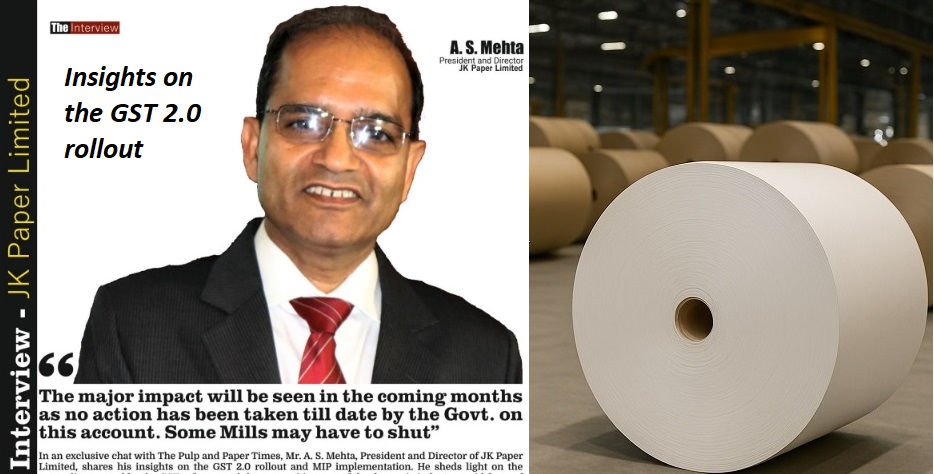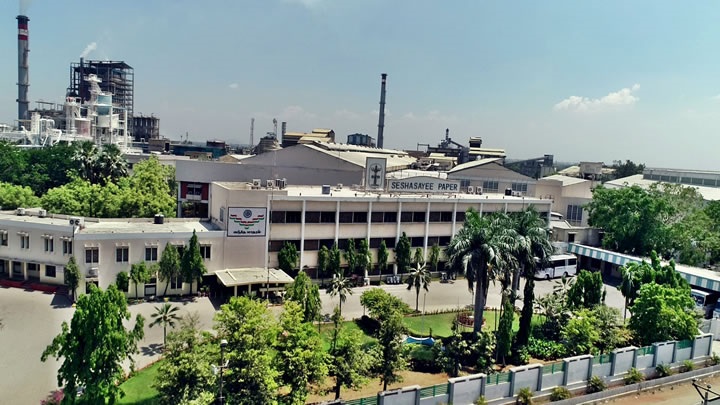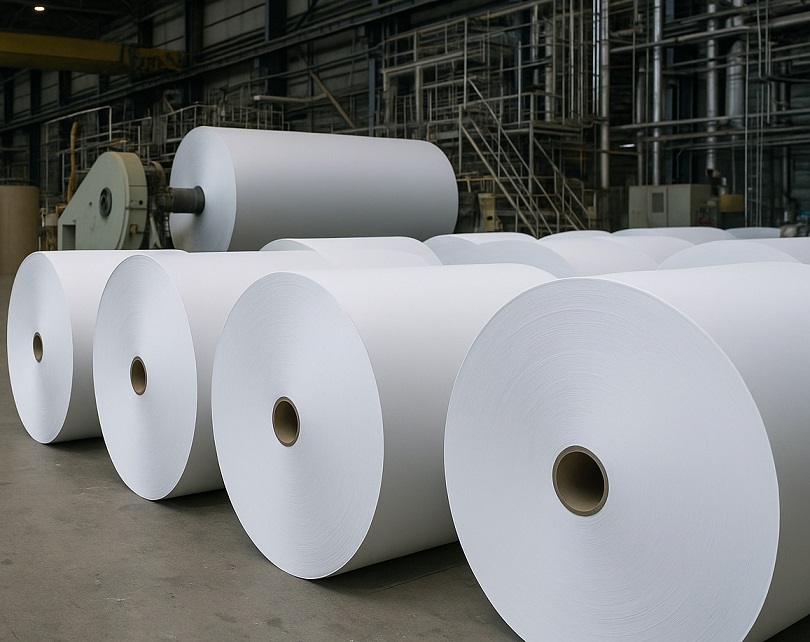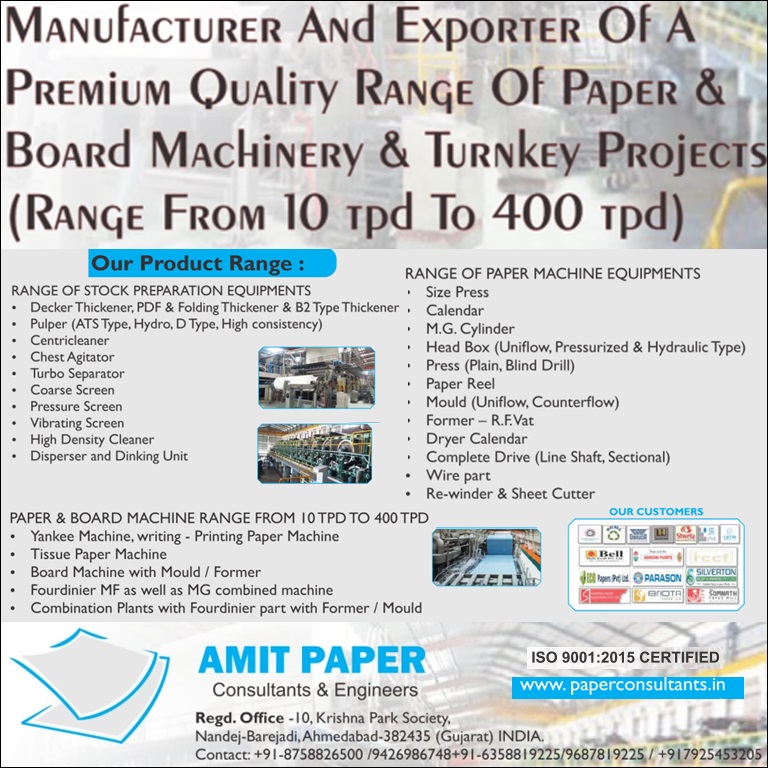The U.S. Tariff War: Implications for India’s Paper Industry, Demand, Pricing, and Import Inflows

The U.S. Tariff War: Implications for India’s Paper Industry, Demand, Pricing, and Import Inflows
- With an estimated 26% tariff on Indian paper exports, the competitiveness of Indian manufacturers in the U.S. market is expected to decline
- Potential financial strain on mid-sized and smaller mills reliant on foreign orders
- Short-term pulp price decline for Indian Paper Mills
The article below is exclusively written by Mr. Rajat Sarkar, who is currently working as Research Manager ( Asia Pacific) at Resourcewise, a leading business intelligence consulting firm that supports the industry's best practices with a unique combination of rich marketplace data, powerful analytics, and expert consulting. Rajat leads the data research and validation for the Asia Pacific region, covering India, China, Indonesia, Japan, Korea, and rest of Asia. He ensures the accuracy, reliability, and timeliness of data and insights that inform clients' decisions and actions.
The Pulp and Paper Times spoke with Mr. Rajat Sarkar about the ripple effect on the Indian paper industry amid the U.S. trade war. We analyze the potential impact on the Indian paper trade in the near future if the trade war continues. Here are his insights:
The U.S. Tariff War: Implications for India’s Paper Industry
The recent imposition of tariffs by the United States on multiple countries, including India, is set to have a significant impact on the global paper and pulp industry. For India, a country with a growing paper market and an evolving industrial landscape, the effects will be far-reaching, impacting paper mills, imports, exports, and the waste paper supply chain. Understanding these implications is crucial for industry stakeholders to navigate the challenges and identify opportunities amid the shifting global trade scenario.
Impact on Indian Paper Mills
The increased tariffs on Indian exports to the U.S. will put significant pressure on Indian paper mills that have been supplying coated and uncoated paper, kraft paper, and packaging boards to American buyers. With an estimated 26% tariff on Indian paper exports, the competitiveness of Indian manufacturers in the U.S. market is expected to decline. This could lead to:
•Reduced export orders, affecting mills dependent on the U.S. as a primary market.
•A shift in focus toward domestic consumption and alternative export destinations.
•Potential financial strain on mid-sized and smaller mills reliant on foreign orders.
However, large integrated paper mills with diversified product lines and a strong domestic foothold may be better positioned to withstand the short-term impact.
Market Dynamics: Demand, Pricing, and Import Inflows
With reduced export potential to the U.S., there is likely to be an oversupply in the domestic market. This could result in:
• A potential decline in paper prices within India, benefiting industries dependent on packaging and publishing but impacting the profitability of mills.
• Increased competition among local manufacturers, pushing the industry toward innovation and efficiency improvements.
• A rise in investment in value-added and specialty paper segments to differentiate from competitors.
• Increased inflow of imports from China and Southeast Asian (SEA) countries such as Indonesia, Thailand, and Vietnam, as these nations redirect their exports from the U.S. to India due to declining demand in the American market. This could put additional pricing pressure on Indian manufacturers, increasing competition from lower-cost imports.
Imports: Pulp Prices and Raw Material Challenges
India is highly dependent on imported pulp and waste paper for its paper manufacturing industry. The U.S. tariff war could have mixed effects on pulp prices:
• Short-term pulp price decline: With reduced demand from the U.S., major pulp-exporting countries such as Canada, Brazil, and Chile may experience an oversupply, leading to lower global pulp prices. This could benefit Indian mills by reducing raw material costs.
• Potential long-term stabilization or increase: If pulp producers cut production to balance supply and demand, prices may stabilize or even rise again over time.
• Increased domestic sourcing: The shifting global trade environment may encourage Indian manufacturers to explore domestic sources of pulp, such as agro-based or recycled fiber, to reduce dependency on imports.
Exports: Market Diversification Strategy
The U.S. tariff imposition serves as a wake-up call for Indian exporters to diversify their markets. Indian paper mills may look to:
• Strengthen trade ties with Southeast Asia, Africa, and the Middle East, where demand for paper and packaging materials is growing.
• Explore opportunities in the European Union, particularly in countries looking for alternatives to Chinese paper products.
• Leverage regional trade agreements to reduce export dependency on tariff-imposing nations.
Waste Paper Imports: A Critical Challenge
India is one of the largest importers of recovered (waste) paper, which is a crucial raw material for the production of recycled paper and board. The tariffs and potential trade disruptions could lead to:
• Reduced availability of imported waste paper from the U.S., which is a major supplier.
• Increased domestic waste paper collection initiatives to compensate for potential shortages.
• A push for improved recycling infrastructure within India to meet industry demand sustainably.
The Future of India’s Paper Market: Challenges and Opportunities
While the tariffs pose challenges, they also present an opportunity for India’s paper industry to become more self-reliant. Key developments to watch include:
• Government incentives for domestic pulp production to reduce dependence on imports.
• Expansion of recycling and waste management programs to ensure a steady supply of raw materials.
• Increased investment in high-quality paper production to compete globally despite trade restrictions.
• Shift toward digitalization in publishing and packaging innovations to stay competitive.
Conclusion
The U.S. tariff war will undoubtedly reshape the Indian paper industry’s trade dynamics. While short-term challenges will include export losses and increased raw material costs, long-term adaptations could lead to a more resilient and self-sufficient industry. Indian paper manufacturers must proactively explore new markets, invest in sustainable raw material solutions, and enhance production efficiency to navigate this evolving trade landscape. By turning challenges into opportunities, India’s paper sector can emerge stronger in the global market despite tariff hurdles.
Web Title: The U.S. Tariff War: Implications for India’s Paper Industry, Demand, Pricing, and Import Inflows





 Join WhatsApp Group
Join WhatsApp Group Join Telegram Channel
Join Telegram Channel Join YouTube Channel
Join YouTube Channel Join Job Channel (View | Submit Jobs)
Join Job Channel (View | Submit Jobs) Join Buy Sell Channel (Free to Submit)
Join Buy Sell Channel (Free to Submit) Paper News Headlines Channel (Free to read)
Paper News Headlines Channel (Free to read)















